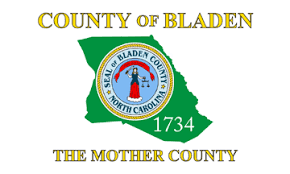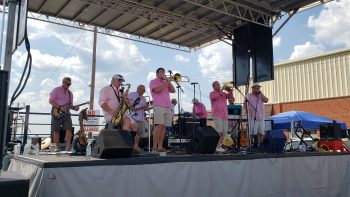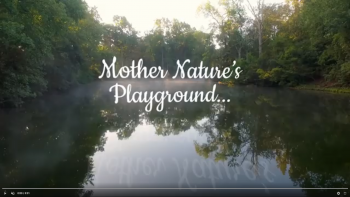BLADEN COUNTY
THE MOTHER COUNTY
COUNTY WEBSITE
 Bladen County has been named the “Mother of Counties” because all or part of 55 of North Carolina’s modern counties and the State of Tennessee were formed from its original land. It remains one of the state’s largest counties.
Bladen County has been named the “Mother of Counties” because all or part of 55 of North Carolina’s modern counties and the State of Tennessee were formed from its original land. It remains one of the state’s largest counties.
POPULATION
29,484 (2023)
LOCATION
Located in southeastern North Carolina, Bladen County borders Robeson, Cumberland, Sampson, Columbus, and Pender Counties. Bladen County is 879 square miles in size and located 121 feet above sea level. Its location assures Bladen of a good climate, with an average annual temperature of 63 degrees, precipitation of 49.1″, and an annual snowfall of less than 4″. The county lies within 25 miles of the Atlantic Ocean.
The county seat is Elizabethtown, which is located half-way between Fayetteville and Wilmington on Highway 87. White Lake is a popular tourism destination known as a family tradition for generations. Each of the surrounding communities of Bladenboro, Clarkton, Dublin, East Arcadia, Kelly, Lisbon, and Tar Heel offer country living in small town environments
HISTORY
Bladen is a county rich in history and tradition. It was first settled by the Highland Scots in 1734, who came to the Cape Fear River Valley seeking religious freedom. The Scots settled throughout Bladen County. Families migrated northwest along the Cape Fear River where they founded Fayetteville and populated Harnett, Richmond, Moore, Robeson, Scotland and Montgomery counties. Many of the descendants of these first settlers still live in Bladen County. Bladen County was named for Martin Bladen, Lord Commissioner of Trade and Plantation. The County’s boundaries in the year 1734 were described as, “…no less than man dared to travel West”.
AGRICULTURAL HERITAGE
Bladen County’s expanse of farmland is a major contributor to the nation’s production of peanuts, tobacco, grains, blueberries, cotton, poultry, and hogs.
RECREATION
The Cape Fear River, South River, and Black River course through Bladen County, providing fishing and boating opportunities. Located on the Cape Fear River, the Lock and Dam # 2 is operated by the United States Army Corp of Engineers and is accessible to the public.
IMPORTANT PHONE NUMBERS:
Curtis Brown Jr Airport 910-862-4522
Board of Education 910-862-4136
Board of Elections 910-862-6951
Building Inspector 910-862-6780
Cooperative Extension Services 910-862-4591
Health Department 910-862-6900
Cape Fear Valley Hospital 910-862-5100
Bladen County Library 910-862-6990
Senior Center 910-872-6330
Sheriff’s Office 910-862-6960
Social Service 910-862-6800
Solid Waste 910-645-4279
Tax Collector 910-862-6730
Veterans Services 910-862-6781
Water Department 910-862-6996




